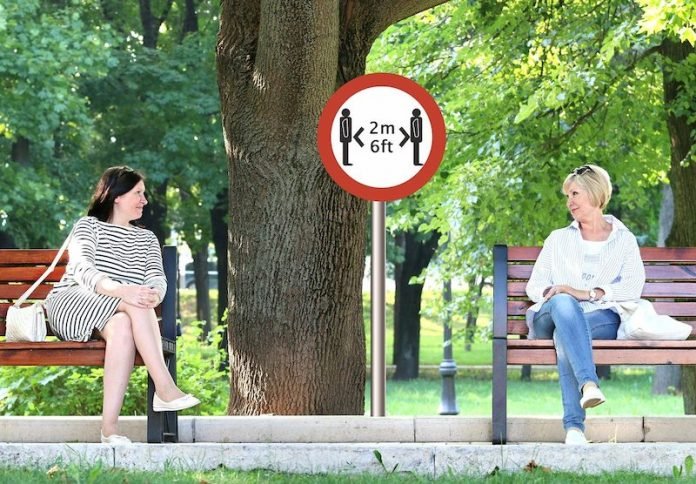
In a new study, researchers found using public transportation, visiting a place of worship, or otherwise traveling from the home is linked to a much higher likelihood of testing positive with COVID-19, while practicing strict social distancing is linked to a markedly lower likelihood.
For their analysis, the researchers surveyed a random sample of more than 1,000 people in the state of Maryland in late June, asking about their social distancing practices, use of public transportation, SARS-CoV-2 infection history, and other COVID-19-relevant behaviors.
They found that those reporting frequent public transport use were more than four times as likely to report a history of testing positive for COVID-19 infection, while those who reported practicing strict outdoor social distancing were just a tenth as likely to report ever being COVID-19 positive.
These findings support the idea that if people are going out, they should practice social distancing to the extent possible because it does seem strongly associated with a lower chance of getting infected.
The research was conducted by a team at Johns Hopkins.
The COVID-19 has infected nearly 27 million people around the world, of whom some 900,000 have died, according to the World Health Organization.
In the absence of a vaccine, public health authorities have emphasized practices such as staying at home, and wearing masks and maintaining social distancing while in public.
Yet there hasn’t been a good way to monitor whether—and among which groups—such practices are being followed.
The 1,030 people included in the study were all living in Maryland, which has logged more than 113,000 SARS-CoV-2 confirmed cases and nearly 3,700 confirmed deaths.
The researchers asked the survey participants questions about recent travel outside the home, their use of masks, social distancing and related practices, and any confirmed infection with SARS-CoV-2 either recently or at all.
The results showed that 55 (5.3%) of the 1,030 participants had tested positive for SARS-CoV-2 infection at any time, while 18 (1.7%) reported testing positive in the two weeks before they were surveyed.
The researchers found that when considering all the variables they could evaluate, spending more time in public places was strongly associated with having a history of SARS-CoV-2 infection. F
or example, an infection history was about 4.3 times more common among participants who stated that they had used public transportation more than three times in the prior two weeks, compared to participants who stated they had never used public transportation in the two-week period.
An infection history also was 16 times more common among those who reported having visited a place of worship three or more times in the prior two weeks, compared to those who reported visiting no place of worship during the period.
The survey did not distinguish between visiting a place of worship for a religious service or other purposes, such as a meeting, summer camp or meal.
Conversely, those who reported practicing social distancing outdoors “always” were only 10% as likely to have a SARS-CoV-2 history, compared to those who reported “never” practicing social distancing.
The data indicated a greater adoption of social distancing practices among some groups who are especially vulnerable to serious COVID-19 illness, suggesting that they were relatively aware of their vulnerability.
The team says that younger people were less likely to reduce their infection risk with social distancing.
It points to the possibility of using these quick, inexpensive surveys to predict where outbreaks are going to happen based on behaviors, and then mobilizing public health resources accordingly.
One author of the study is Sunil Solomon, MBBS, PhD, MPH, an associate professor in the Bloomberg School’s Department of Epidemiology.
The study is published in Clinical Infectious Diseases.
Copyright © 2020 Knowridge Science Report. All rights reserved.



